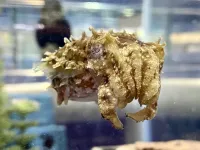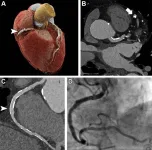(Press-News.org) Outcome indicators make quality of life after childhood cancer measurable
A new measurement tool helps analyzing the survival rate of children with cancer, but also the quality of survival. Researchers at the Princess Máxima Center for Pediatric Oncology have worked with patients and survivors to develop a set of outcome indicators that measure health issues. By making the balance between survival and quality of life measurable, the outcome indicators help improve care for children with cancer.
There are many types of childhood cancer, and the consequences for later life can vary enormously. Some children or adults after surviving childhood cancer experience daily consequences of the disease or treatment, on the physical and psychosocial as well as the neurocognitive level. Others have relatively few late effects and can live their lives like anyone else. The more relevant data is available, the more effective treatments with less adverse effects can become. Researchers faced the question: how do you determine the quality of survival after childhood cancer?
International consensus
The initiative for the outcome indicators project was taken by the Princess Máxima Center together with St. Jude Children's Research Hospital in the United States. Researchers surveyed more than 450 experts in pediatric oncology worldwide, as well as people who themselves had cancer as children. Consensus was reached on 24 clinically relevant outcomes for 18 types of childhood cancer. The results of the project were published on Thursday 15 June in the leading journal Nature Medicine.
Quality of survival
'Especially now that pediatric cancer survival is improving significantly, attention to the quality of survival is very important,' says Rebecca van Kalsbeek, PhD student in the Kremer group at the Princess Máxima Center. 'Together, we selected physical, psychosocial and neurocognitive outcomes. Certain outcomes emerged in almost all types of childhood cancer: heart failure, development of a second tumor, fertility and psychosocial quality of life. There is now good international consensus on the outcomes that determine quality of survival and say something about the quality of care we provide.'
Highest level
Prof. dr. Rob Pieters, medical director of the Princess Máxima Center, says: ‘With the development of outcome indicators, we want to account for quality of care at the highest level as the largest pediatric oncology center in Europe. What are our outcomes of care and treatment like? How can we further improve our care during and after cancer treatment? What is important for patients in later life? Using outcome indicators, we now make the quality of our care and the health of the cured child clearly measurable and comparable with other hospitals. That’s part of the mission of the Máxima Center, to cure all children with cancer with optimal quality of life.'
Global collaboration
When outcome indicators are systematically tracked and evaluated, it becomes possible to improve evidence-based care during and after childhood cancer. Prof. dr. Leontien Kremer, principal investigator of late effects at the Princess Máxima Center, says: ‘Because pediatric tumors are relatively rare, it is very important to collaborate internationally. The strength of the outcome indicators project is the collaboration between people from different backgrounds. Survivors and pediatric oncologists, nursing specialists and (neuro)psychologists, among others, contributed their own perspectives, and together we agreed on what outcomes are important for children and survivors.’
END
Outcome indicators make quality of life after childhood cancer measurable
2023-06-20
ELSE PRESS RELEASES FROM THIS DATE:
Hidden mechanism connects cancer and diabetes
2023-06-20
Back in the 1920s, researchers discovered that cancer patients had sweet-smelling urine. First, the doctors were puzzled, but they soon realised that it was a result of elevated blood sugar levels.
“This was one of the first things we learned about cancer patients,” says Associate Professor Lykke Sylow.
The sweet-smelling urine suggested that cancer affects the body’s blood sugar level. But how? A new study is ready to answer that question. Where previous studies have examined the connection between cancer and insulin, Lykke Sylow and colleagues’ ...
The meaning behind the Woodstock character in ‘Peanuts’
2023-06-20
COLUMBUS, Ohio – Charles Schulz, creator of the comic strip “Peanuts,” was anything but a hippie.
Still, he named the beloved yellow bird character in “Peanuts” Woodstock after the famous counterculture music festival that was attended and celebrated by the younger generation who grew up in the 1960s and ’70s, including many who saw themselves as hippies.
The question is why, says Michelle Ann Abate, author of the new book Blockheads, Beagles, and Sweet Babboos: New Perspectives on Charles M. Schulz’s Peanuts.
Based on her critical analysis of the strips featuring Woodstock, ...
Restoring the blood-brain barrier?
2023-06-20
There's a bouncer in everyone: The blood-brain barrier, a layer of cells between blood vessels and the rest of the brain, kicks out toxins, pathogens and other undesirables that can sabotage the brain's precious gray matter.
When the bouncer is off its guard and a rowdy element gains entry, a variety of conditions can crop up. Barrier-invading cancer cells can develop into tumors, and multiple sclerosis can occur when too many white blood cells slip pass the barrier, leading to an autoimmune attack on the protective layer of brain nerves, hindering their communication with the rest of the body.
"A leaky blood-brain barrier is a common ...
Combining cancer-targeting virus therapy with radiation to fight brain cancer works better than either treatment on its own: study
2023-06-20
EDMONTON — Combining a cancer-targeting virus with radiation to treat brain cancer in mice was more effective than either therapy on its own according to University of Alberta research, providing hope for new treatments that combine immunotherapy with traditional surgery, chemotherapy or radiation.
The researchers treated mice with glioblastoma brain tumours simultaneously with high-dose radiation and a genetically engineered oncolytic vaccinia virus, a virus that has been used safely as a vaccine against smallpox.
The ...
Exploring the deep connections between adolescent sleep and overall health
2023-06-20
As director of SRI’s Human Sleep Research Program, Fiona Baker studies the complex interplay between sleep and overall health and well-being.
Much of her work has been focused on sleep patterns in adult women, but recently her attention has turned to adolescents. Adolescence is a crucial time for developing healthy sleep patterns as it is for brain development. In her research, Baker draws clear lines of connection between the two.
“Sleep is so important to us all, but especially for teenagers or adolescents,” Baker says. “Between the ages of 10 and 21, or so, and even a little later, the ...
SRI seeks to learn how insects speak through smells
2023-06-20
All around us, insects are speaking to each other: jockeying for mates, searching for food, and trying to avoid becoming someone else’s next meal. Some of this communication is easy to spot—like the flashes of fireflies on a summer night or a screaming chorus of cicadas in the afternoon—but many of the most sophisticated conversations are challenging to observe, occurring through an exchange of chemical scents.
Understanding chemical communication could be the key to finding new, more effective ways to protect crops or ward off biting insects that can transmit diseases. Researchers ...
Cuttlefish brain atlas first of its kind
2023-06-20
NEW YORK, NY — Anything with three hearts, blue blood and skin that can change colors like a display in Times Square is likely to turn heads. Meet Sepia bandensis, known more descriptively as the camouflaging dwarf cuttlefish. Over the past three years, a team led by neuroscientists at Columbia’s Zuckerman that includes data experts and web designers has put together a brain atlas of this captivating cephalopod: a neuroanatomical roadmap depicting for the first time the brain’s overall 32-lobed structure as well its cellular organization.
The ...
Climate action plans mobilize limited urban change, researchers report
2023-06-20
The Intergovernmental Panel on Climate Change Fifth Assessment Report (AR5), released just prior to an international climate convention in 2015, explicitly stated that human-caused greenhouse gas emissions were the highest in history, with clear and widespread impacts on the climate system. Since then, hundreds of cities across the world have published their own climate action plans (CAPs), detailing how their urban areas will handle climate change. How do the plans stack up against one another and against the recommended ...
Photon-counting CT noninvasively detects heart disease in high-risk patients
2023-06-20
OAK BROOK, Ill. – New ultra-high-resolution CT technology enables excellent image quality and accurate diagnosis of coronary artery disease in high-risk patients, a potentially significant benefit for people previously ineligible for noninvasive screening, according to a study published in Radiology, a journal of the Radiological Society of North America (RSNA).
Coronary artery disease is the most common form of heart disease. Coronary CT angiography (CCTA) is highly effective for ruling out coronary artery disease ...
Self-driving revolution hampered by a lack of accurate simulations of human behavior
2023-06-20
Self-driving revolution hampered by a lack of accurate simulations of human behaviour
Algorithms that accurately reflect the behaviour of road users - vital for the safe roll out of driverless vehicles - are still not available, warn scientists.
They say there is “formidable complexity” in developing software that can predict the way people behave and interact on the roads, be they pedestrians, motorists or bike riders.
To improve the modelling, a research team led by Professor Gustav Markkula from the Institute of Transport Studies ...



